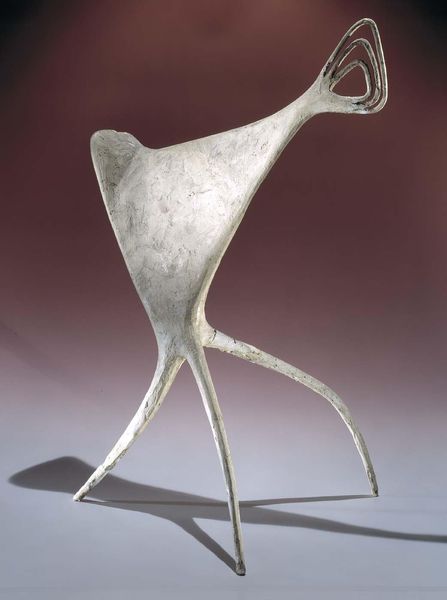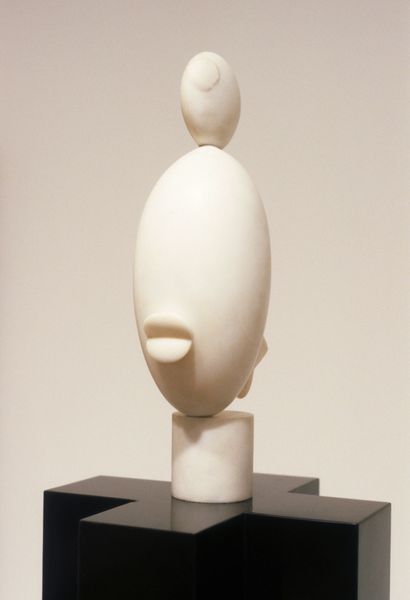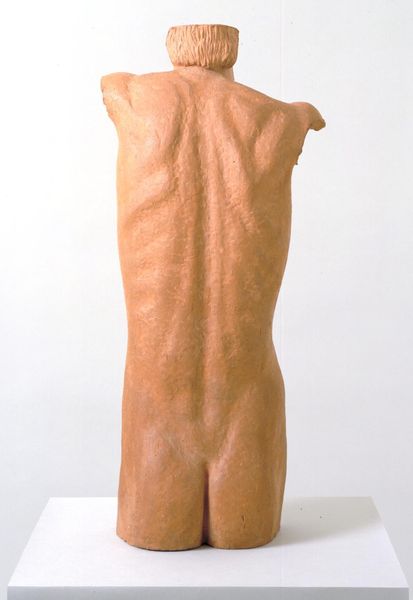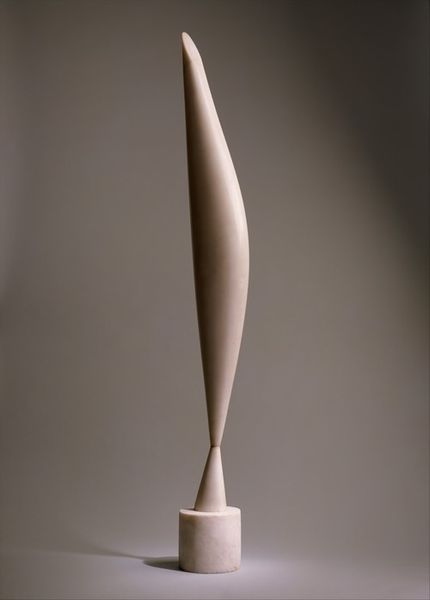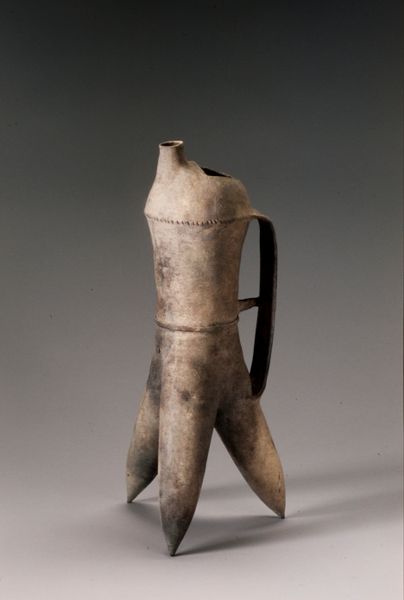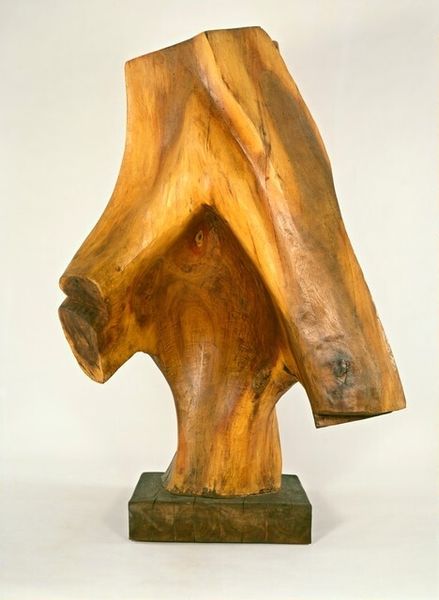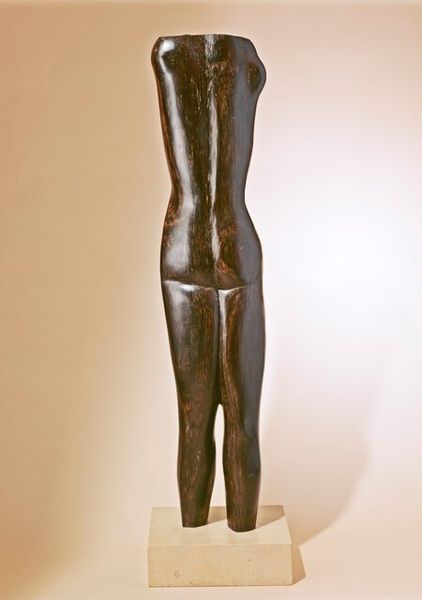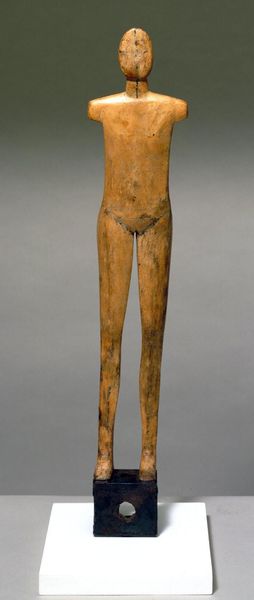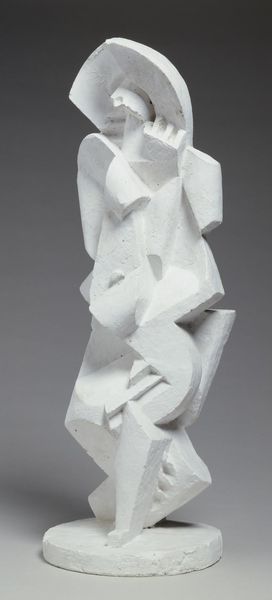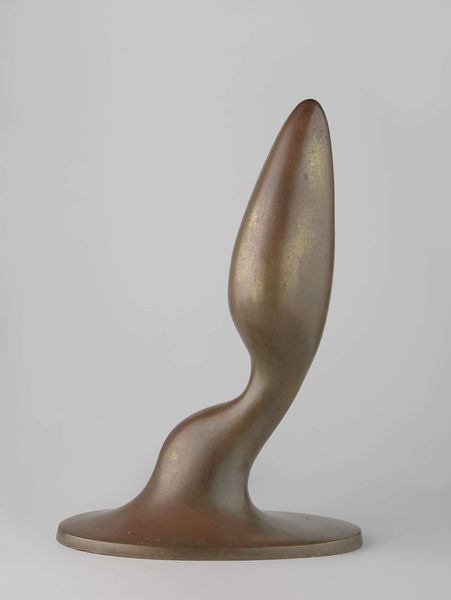
sculpture, wood
#
cubism
#
figuration
#
sculpture
#
abstraction
#
wood
Copyright: Public domain US
Curator: Let’s turn our attention to “Vase Figure,” a wood sculpture crafted in 1918 by Olexandr Archipenko. What strikes you first about it? Editor: The austerity of it. It’s smooth, elongated—almost brittle, despite being wood. It has a sort of melancholic elegance, doesn’t it? I find the color adds to that—this gentle peach or pale terracotta tone. It looks simultaneously ancient and futuristic, given it's use of simplification of human figure. Curator: Indeed. It's a prime example of Archipenko's exploration of Cubist sculpture, blending abstraction and figuration in a radical way. This was a period of immense societal upheaval, with the rise of industrial production and global conflict fundamentally altering the human condition. The public was searching for a language to express such dramatic change. Editor: Which is all embedded in his methodology. The visible, crafted marks, even the choice of wood. I wonder where he sourced this piece; whether this affects meaning, which links it back to ideas of labor and resources. Its smooth appearance belies the hands-on labor involved in carving. We should appreciate both how easily materials are transformed through the artistic vision into a "vase", but also see it as representation of woman. Curator: Certainly. Moreover, Archipenko, alongside other artists, played a pivotal role in democratizing art's engagement with new aesthetic standards. They reshaped public opinion and acceptance of modern art forms, contributing significantly to the evolution of taste and art collecting. These experimental objects challenged and often scandalized audiences. Editor: It almost begs us to touch it, doesn’t it? That perfect sleekness – a monument to material transformed and woman elevated! You make me think it might've shocked more conservative folk back then, who prized lifelike marble sculptures from previous periods. Curator: Precisely. It encapsulates so many cultural dialogues of the early 20th century: abstraction, the figure, and society's changing relationship with both art and the world at large. Editor: Considering it today, it encourages us to consider the labor and materials embedded in cultural expressions. Curator: Exactly, a testament to how a single object can reveal expansive dialogues regarding politics, labor, aesthetics, and history.
Comments
No comments
Be the first to comment and join the conversation on the ultimate creative platform.
